If you’ve ever stood in the paint aisle, staring at finishes like matte, eggshell, and gloss, wondering what satin even means, I’ve been there.
It sounds fancy, but satin isn’t a color; it’s a finish.
It falls right between flat and shiny, giving you a soft glow without being too reflective. What I love about satin is its adaptability.
It works beautifully in high-traffic areas, such as hallways and kitchens, because it’s easy to clean yet still looks smooth and elegant.
In this post, I’ll break down what satin paint looks like, how it holds up, and why I keep coming back to it for so many home projects.
Thinking about painting soon? Stick with me, this could be the finish you’ve been looking for!
What Color Is Satin?

Satin is often mistaken for a color, but it’s a paint finish. Unlike paint colors, which refer to the actual pigment or shade (like blue, beige, or gray), satin describes how the paint surface reflects light.
It has a soft, pearl-like sheen that gives the painted surface a subtle glow without appearing overly glossy.
One common misunderstanding is the assumption that “satin” refers to a light or creamy shade. In reality, any color can have a satin finish, whether it’s white, navy, or forest green.
The term “satin” refers to the finish’s appearance and texture, not the hue itself.
When choosing paint, it’s essential to consider both the color and the finish, as the sheen can significantly impact how the color appears under various lighting conditions and the durability of the surface.
Characteristics of Satin Finish Paint
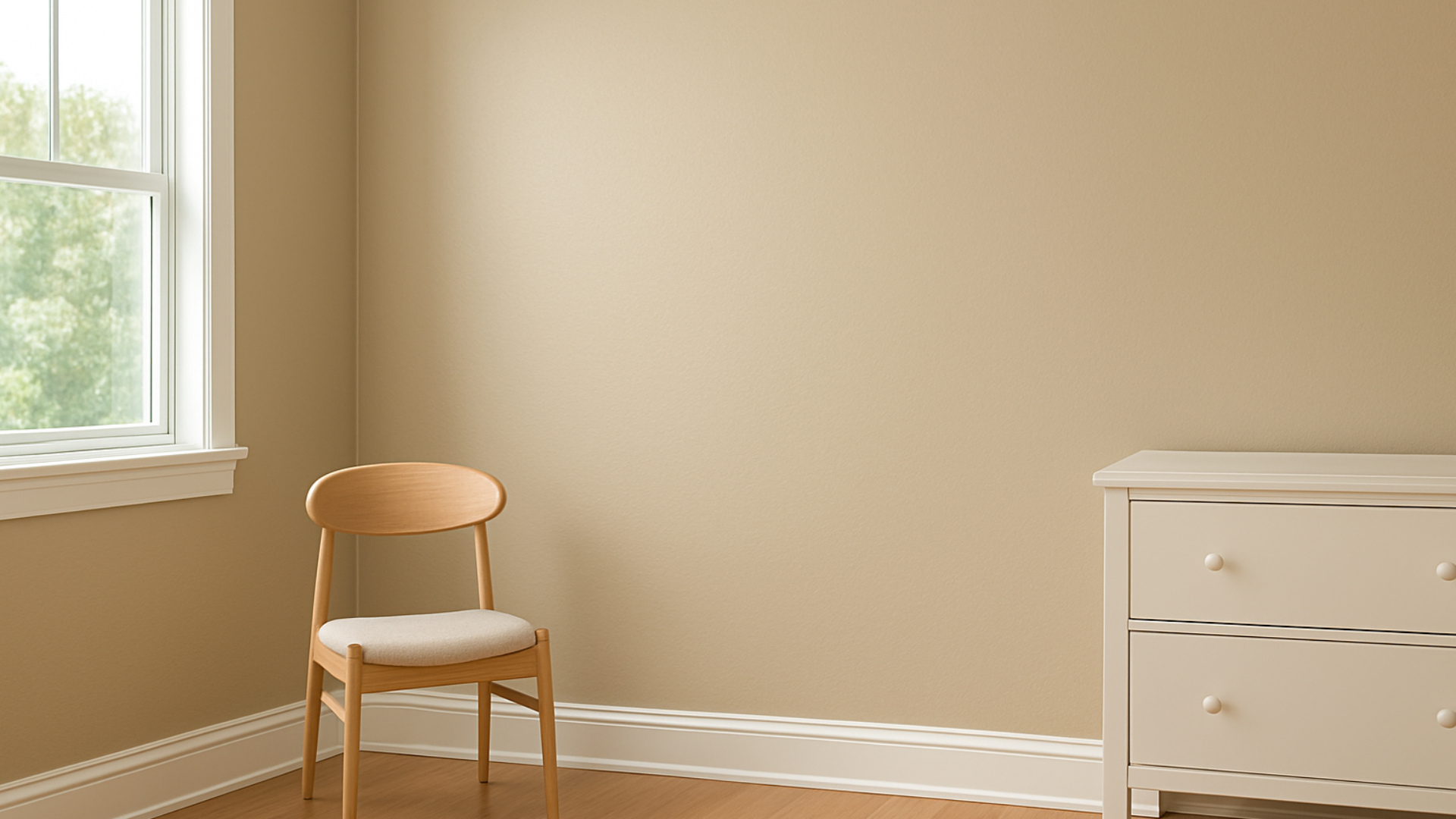
Satin finish paint offers a soft sheen, smooth texture, moderate durability, and easy maintenance, making it ideal for both stylish and functional interior spaces.
1. Soft Sheen
Satin paint is known for its gentle, pearl-like sheen that reflects light softly without creating glare.
It offers a finish that sits between flat and glossy, adding a touch of elegance to walls without being overpowering.
This subtle glow enhances the depth of color and helps brighten up spaces, making it ideal for living rooms, hallways, or any area where a soft, welcoming look is desired.
2. Smooth Finish
One of satin paint’s standout qualities is its smooth, velvety surface. It creates a polished and refined appearance that works well on walls, woodwork, and trim.
This sleek finish adds visual appeal to a room and gives painted surfaces a clean, professional look.
The uniform texture helps elevate everyday spaces, making them feel more finished and cohesive without drawing too much attention.
3. Moderate Durability
Satin paint strikes a nice balance between beauty and strength.
It’s more durable than flat or matte finishes and can withstand regular wear from foot traffic, furniture, or daily activity.
While not as tough as semi-gloss, it resists minor scuffs and marks, making it a great choice for family homes or busy interiors where a little extra resilience is needed without sacrificing style.
4. Easy to Clean
Cleaning satin paint is simple and hassle-free. Unlike matte finishes, which can smudge or stain easily, satin stands up to gentle scrubbing with a damp cloth or sponge.
This makes it ideal for spaces like kitchens, bathrooms, or kids’ rooms, where messes are a daily occurrence.
It maintains its finish even after multiple cleanings, helping walls stay fresh and looking new over time.
5. Reveals Imperfections
Because satin paint has a light-reflective surface, it can draw attention to flaws like bumps, cracks, or uneven patches on the wall.
Proper surface preparation, such as sanding and priming, is essential for achieving a smooth result.
Any imperfections that are missed during prep may become more noticeable once the paint dries, especially in areas with direct or angled lighting.
6. Versatile Use
Satin paint works well across a wide range of interior spaces due to its balanced look and practical durability.
It’s a favorite for hallways, kitchens, bedrooms, and even furniture or trim.
This versatility enables it to serve in both stylish and functional roles, making it a go-to choice for homeowners, decorators, and professionals seeking a reliable and attractive finish.
Best Rooms to Use Satin Paint
Satin paint strikes the perfect balance between durability and elegance, making it an excellent choice for high-traffic and moisture-prone rooms.
1. Kitchen
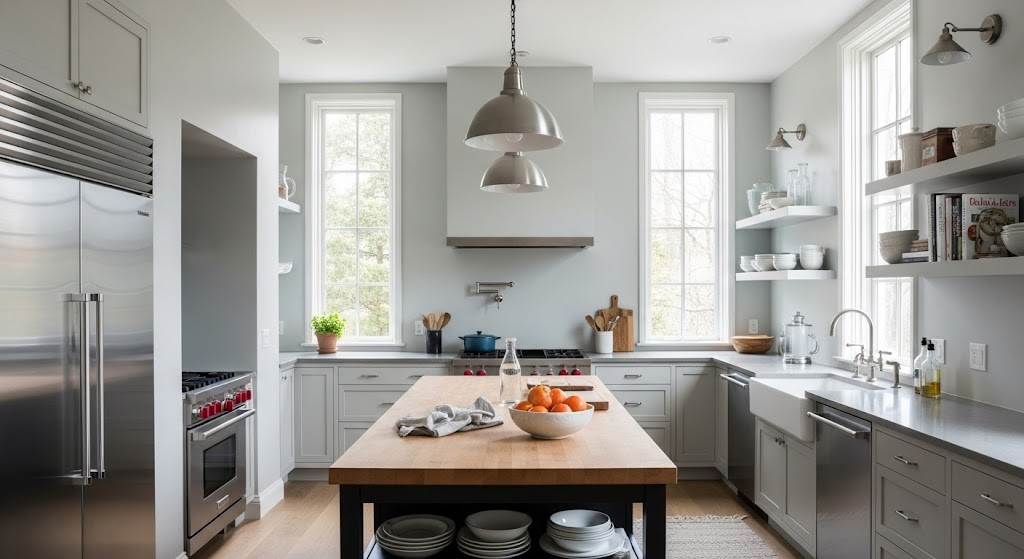
Kitchens are a prime spot for satin paint because of its moisture resistance and easy-to-clean finish.
Unlike flat finishes, it doesn’t stain as easily, and you can wipe it down regularly without damaging the surface.
It also brings a soft sheen that works well with both light and bold wall colors commonly used in kitchen spaces.
2. Bathroom

Bathrooms require a paint finish that can withstand humidity and occasional splashes, and satin paint is ideal for the job.
Satin’s slight gloss also makes it easier to wipe away watermarks or soap residue.
It gives your bathroom walls a clean, smooth look without the high shine of semi-gloss, making it both functional and visually pleasing for everyday use.
3. Hallways
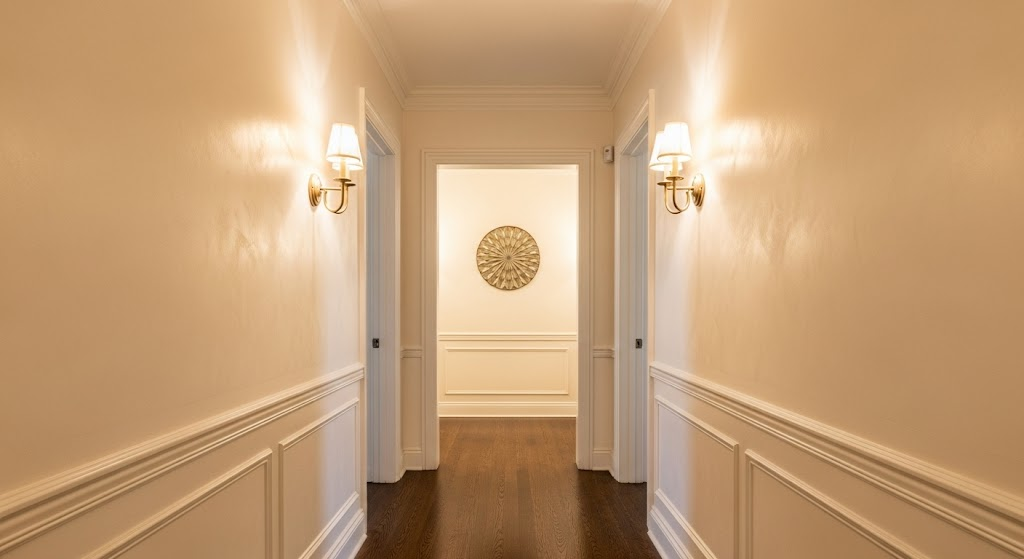
Hallways take a lot of abuse from daily foot traffic, furniture bumps, and handprints, so durability matters.
Satin paint provides a tough surface that resists scuffing and can be cleaned without fading.
Its light-reflecting quality also helps brighten narrow or windowless hallways, making the space feel more open and welcoming.
4. Entryways
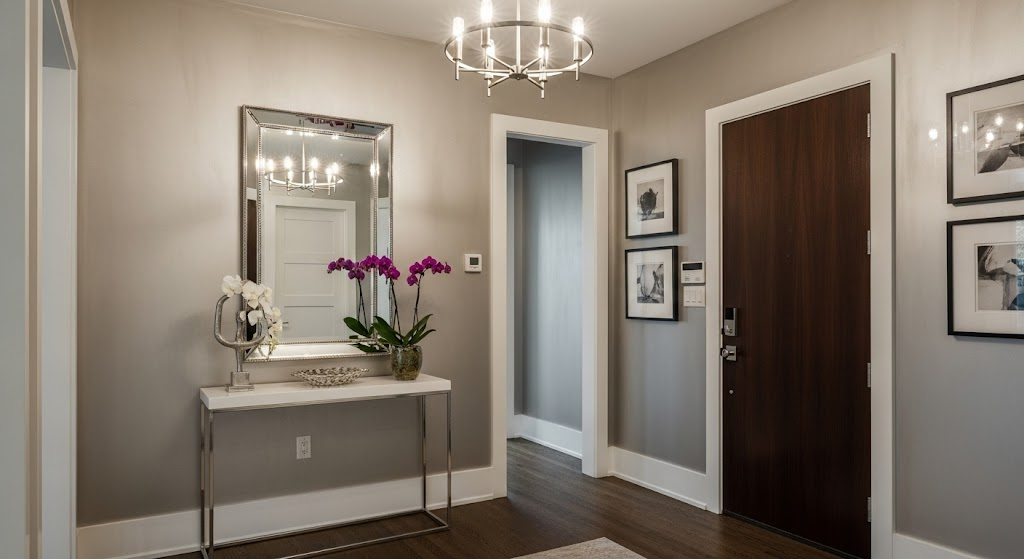
The entryway sets the tone for your entire home, and satin paint ensures it stays looking sharp.
As a high-traffic area, it benefits from satin’s ability to resist dirt, fingerprints, and dings.
Plus, since people often pause here to remove shoes or hang coats, a washable finish is essential.
Satin paint gives just enough shine to add a welcoming touch without being too reflective, perfect for this transitional space.
5. Children’s Bedrooms
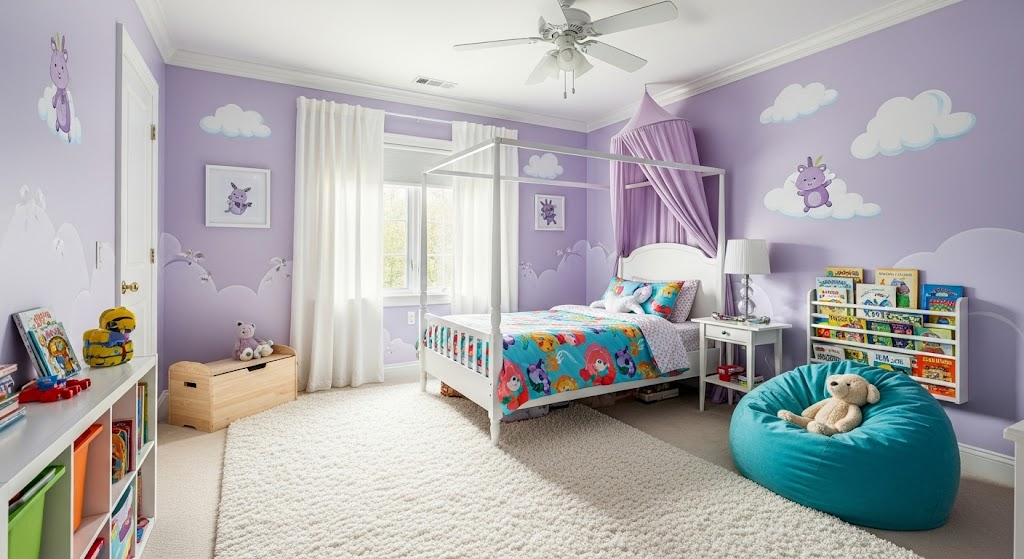
Satin paint is ideal for kids’ rooms because it balances durability with a soft appearance.
Children’s walls often become home to crayon marks, scuffs, and sticky fingerprints, so a finish that’s easy to clean is a must.
Satin can handle regular scrubbing without wearing down or losing color. It’s also gentler on the eyes than glossy paint, making it a great choice for restful bedrooms that still need to be kid-proof.
Satin Finish vs. Matte vs. Semi-Gloss: Key Differences
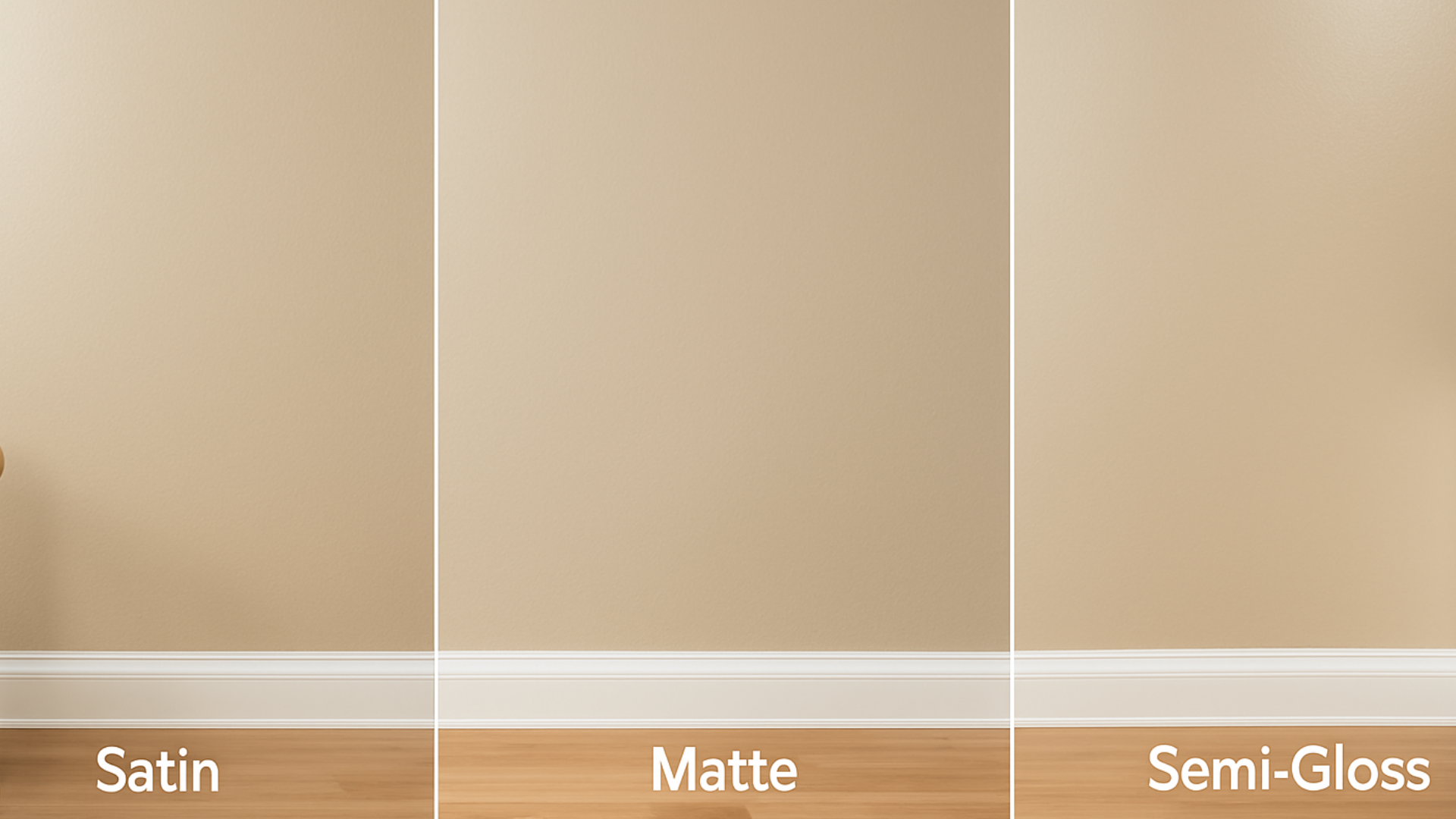
Choosing the right paint finish depends on more than just appearance factors like durability, light reflection, and ease of cleaning, all of which come into play.
| Feature | Matte Finish | Satin Finish | Semi-Gloss Finish |
|---|---|---|---|
| Sheen Level | No shine (flat) | Soft, low-luster glow | Bright, reflective surface |
| Appearance | Smooth, muted, velvety look | Subtle shine with smooth texture | Crisp and shiny with a polished look |
| Imperfection Hiding | Excellent at hiding wall flaws | Hides some imperfections | Highlights surface flaws |
| Durability | Low | Medium to high | High |
| Ease of Cleaning | It can be difficult to clean | Easy to wipe down | Very easy to scrub |
| Best Use Areas | Bedrooms, ceilings, and low-traffic rooms | Living rooms, hallways, kids’ rooms | Kitchens, bathrooms, doors, trims |
| Moisture Resistance | Low | Moderate | High |
| Light Reflection | Absorbs light | Reflects a small amount of light | Reflects a lot of light |
1. Appearance
- Satin offers a soft, velvety sheen that brings gentle light reflection to the surface. It adds a smooth, elegant glow to walls, enhancing the richness of paint colors without looking too shiny.
- Matte delivers a flat, non-reflective finish that creates a muted, uniform appearance. It softens the room’s atmosphere and conceals surface textures well.
- Semi-Gloss provides a sharp, polished look with noticeable shine. It highlights architectural details but also emphasizes flaws on the surface.
2. Sheen Level
- Satin falls in the middle of the sheen scale with a subtle luster. It reflects a small amount of light, making it ideal for spaces where you want a touch of glow without too much shine.
- Matte has no shine at all, giving a completely flat finish. It absorbs light rather than reflecting it, resulting in a soft and understated look.
- Semi-Gloss has a high level of sheen and reflects a significant amount of light. It creates a bright and attention-grabbing surface.
3. Durability
- Satin is more durable than matte and can withstand regular cleaning and minor wear. It’s a reliable choice for family areas or moderately busy rooms.
- Matte is the least durable and most prone to scuffing, staining, or marking. It’s best used in low-traffic, low-maintenance areas.
- Semi-Gloss is highly durable and resistant to moisture, scratches, and frequent cleaning. Suitable for areas with heavy use and exposure to messes.
4. Best Use Areas
- Satin: Works well in living rooms, hallways, and bedrooms, places that get moderate use and benefit from a balance of style and practicality.
- Matte: Ideal for ceilings, adult bedrooms, or formal spaces where traffic and mess are minimal and aesthetics are the focus.
- Semi-Gloss: Perfect for kitchens, bathrooms, trim, and doors where durability and cleanability are top priorities.
5. Moisture Resistance
- Satin offers moderate moisture resistance and performs well in rooms with occasional humidity, like ventilated bathrooms or kitchens.
- Matte has Poor moisture resistance. It can peel, stain, or bubble when exposed to humidity or steam, making it unsuitable for damp environments.
- Semi-Gloss has excellent resistance to moisture and steam, making it a smart choice for bathrooms, laundry rooms, and other wet areas.
6. Light Reflection
- Satin reflects a gentle amount of light, adding warmth and depth to the room without being overpowering. Great for balanced lighting.
- Matte absorbs light, creating a soft, shadow-free look. This makes the space feel calm and cozy, especially in larger rooms.
- Semi-Gloss reflects a lot of light and can brighten up dark areas, but it can also create glare in well-lit rooms.
How Lighting Affects Satin Paint
Lighting plays a key role in how satin paint appears on your walls. Because satin has a slight sheen, it interacts with both natural and artificial light in noticeable ways.
In natural light, satin paint reflects softly, giving the room a warm, subtle glow.
This can make colors appear slightly richer during the day and shift tones depending on the time and angle of sunlight.
It adds depth without overwhelming the space, especially in rooms with windows or skylights.
Under artificial lighting like warm LEDs or cool fluorescents, satin can either soften or sharpen, depending on the bulb type.
Warm lights enhance its cozy finish, while cool lights make the sheen more pronounced.
Tips for Applying Satin Paint Like a Pro
Getting a smooth, even finish with satin paint takes a bit of care and the right tools. Because satin has a slight sheen, any flaws in application or surface prep can show through.
- Prep the surface thoroughly – Clean the walls and fill any holes or cracks. Sand smooth to avoid highlighting imperfections.
- Use a quality primer – Especially on patched or glossy surfaces, primer helps the satin finish adhere evenly.
- Choose the right roller – A 3/8″ nap roller works best for smooth to lightly textured walls.
- Work in sections – Apply paint in small, manageable areas using a consistent “W” or “M” pattern.
- Avoid overbrushing or rerolling – Once the paint starts drying, leave it alone to prevent streaks or lap marks.
Should You Choose Satin for Your Next Project?
Satin paint is a versatile finish that suits a wide range of rooms and conditions.
If you’re working with a space that sees moderate to high traffic, like hallways, kids’ rooms, or entryways, satin offers the durability you need without sacrificing style.
It stands up to routine cleaning, resists minor moisture, and has just enough sheen to enhance wall color and reflect light gently.
Satin also performs well in rooms with varying lighting, from bright natural sunlight to soft artificial tones.
If you want a finish that’s easy to live with and still visually appealing, satin is likely the right choice.
Conclusion
Now that it’s clear satin refers to a finish, not a color, you can choose your paint with more confidence.
Satin has become one of my personal go-tos for a reason. It gives just the right amount of glow without being too shiny, and it holds up well in areas where life gets a little messy.
If you’re painting a hallway, bathroom, or your kid’s bedroom, satin offers a nice balance between beauty and durability.
If you’re still unsure, start with a sample and test it in different lighting throughout the day; it can really change the feel of a room.
Thinking about starting your next paint project?
Feel free to share your plans or ask questions in the comments. I’d love to help you make the best choice!

